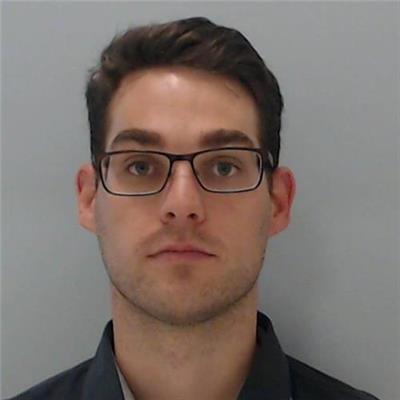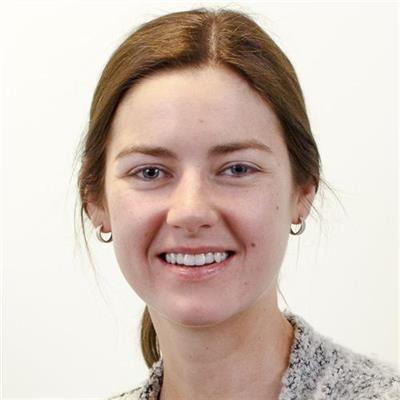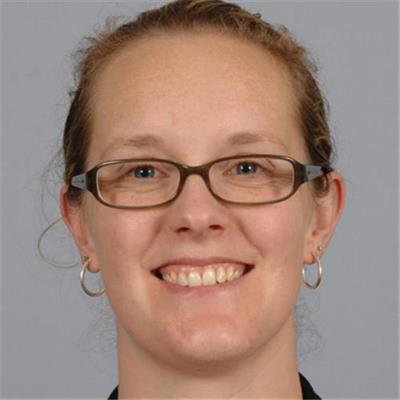Brain and Mitochondrial
Improving diagnosis and outcomes for children and families with rare inherited mitochondrial and neurogenetic diseases.
We aim to improve diagnosis and outcomes for children and families affected by rare inherited diseases, particularly those affecting mitochondria (our cellular power plants), and other critical cellular processes impacting the healthy development of brain and nerves.
We have been the major national centre for laboratory investigation of mitochondrial disease for three decades and have longstanding research interests in other inherited metabolic disorders and neurogenetic conditions like Rett syndrome.
Key research areas
Genomics and Functional Genomics for Diagnosis
DNA sequencing technologies have transformed the diagnosis of rare diseases. However, around half of all patients suspected of having mitochondrial or other rare inherited diseases currently remain without a diagnosis after genomic investigations. We employ “multi-omic” approaches to solve these difficult cases including transcriptomics, proteomics and targeted functional analyses.
Preclinical Stem Cell Models
To model mitochondrial diseases and other neurogenetic conditions ‘in a dish’ we use pluripotent stem cell technology to turn patient skin cells into different cell types such as cardiomyocyte (heart cells) and neurons. These patient-specific models enable the study of disease mechanisms and treatment strategies in the most relevant cell types.
Implementation of Research into the Australian Health Care System
Research discoveries can take years to be introduced into clinical practice. We focus on developing an evidence base to facilitate this, playing lead roles in local, national and international consortia such as RDNow, Australian Genomics, International Precision Child Heath Partnership (IPCHiP) and Leigh Syndrome Roadmap Project. These seek to build capacity for delivery of genomic diagnostic services, ensure publicly accessible reproductive options to prevent inherited disease, develop health economic evidence for introducing new services, and facilitate recruitment of patients into clinical trials. We engage closely with consumer organisations such as the Mito Foundation, to seek legislative change so mitochondrial donation will be available to Australian families.
David Thorburn Interview by Indira Naidoo on ABC Nightlife
Professor David Thorburn discusses the diagnosis of mitochondrial disease and proposed laws around mitochondrial donation. Interview by Indira Naidoo, ABC Nightlife.
Lewis' legacy
Liz and Luke share their deeply personal story of their little boy Lewis, who sadly died of mitochondrial heart disease eight days after being born. Lewis' legacy however means MCRI researchers like Alison Compton and Ann Frazier can tell affected families that this awful outcome is extremely unlikely to happen again.
NAD(P)HX dehydratase (NAXD) deficiency
An international team of researchers, led by MCRI, have identified a rare genetic brain disorder that causes severe neurological damage in children after a mild episode of fever or illness.
Theme Director

Group Leaders

Team Leaders



Group Members








Our projects
Into the Unknown: multi-omic analyses of inherited metabolic disorders with ‘variants of uncertain significance’
Individual “rare diseases” affect less than 1 in 2000 people but collectively the >7000 rare diseases affect over 1 million Australians. Mitochondrial diseases are the most common form of inherited metabolic disorders and are currently known to comprise over 350 distinct monogenic causes. Genomic sequencing has transformed the diagnosis of rare diseases; however, many cases remain unsolved. This project uses a combination of state-of-the-art wet and dry lab technologies to investigate ‘variants of uncertain significance’ in known or candidate disease genes from existing genome sequencing. This will generate definitive diagnoses for previously unsolvable patients, aid understanding of disease and develop methods that can apply to the diagnosis and understanding of other rare diseases.
Stem cell models to investigate disease mechanisms in metabolic and neurogenetic disorders
Investigations into disease pathomechanisms are often limited by access to affected tissues and cells, such as heart and brain. For this reason, the mechanisms leading to disease are poorly understood. We are using pluripotent stem cell model systems differentiated into cardiomyocytes (heart cells) or neurons to investigate the tissue-specific disease mechanisms behind several neurological and mitochondrial conditions. We use pioneering techniques to unravel molecular pathways in these disease-relevant cell lineages using functional analyses of mitochondrial and specific cellular pathways, transcriptomics and quantitative proteomics.
Precision therapeutics in preclinical models of mitochondrial and neurogenetic conditions
We have established a range of human pluripotent stem cell (hPSC) and other model systems resembling neurons and cardiomyocytes that will be utilised in screens aiming to improve therapeutic options in disorders that lack effective treatments. The MCRI Disease Modelling Facility provides access to compound libraries and state of the art equipment for high-throughput drug screening and monitoring outcomes. Examples of current screens include:
- hPSC-derived cardiomyocyte models of mitochondrial disease to identify candidates for improving mitochondrial cardiomyopathy.
- High-throughput drug screening of hPSC-derived neurons or other models to identify potential therapies to protect brain function in children with debilitating disorders including NAD metabolite repair disorders, CDKL5 Deficiency disorder, TRAPPC4 disorder and KIF1A disorders.
Solving the unsolved: life-changing answers for families
Rare diseases affect up to 15,000 Australian children each year, and over one-third of these families are seen at the Royal Children’s Hospital for diagnosis. This is not surprising given that 80% of rare diseases have a genetic origin. The RCH is internationally renowned for implementing genomics into clinical care. In this project (incorporating the Undiagnosed Diseases Program Victoria and RDNow) we are utilising and expanding our research capacity in rare disease to increase the number of RCH families that will be given an answer–bringing an end to their ‘diagnostic odyssey’. We bring together campus clinicians and researchers working with rare diseases with other world-leading children’s hospitals – ultimately uniting pathways of care, and accelerating the development of novel therapies internationally.
The Undiagnosed Diseases Network-Australia (UDN-Aus)
Genomic sequencing has transformed the diagnosis of individuals with rare genetic disorders, most times drastically shortening their diagnostic odyssey. In the clinical setting, diagnostic rates of up to 50% may be achieved, However, this means that half of the individuals remain without a diagnosis. In this project, we have brought together a national multidisciplinary team to establish the Undiagnosed Diseases Network of Australia (UDN-Aus), harnessing nodes of clinical and scientific expertise to implement robust, consistent, timely and scalable genomic re-analysis and facilitate multi-pronged use of frontier genomic technologies and functional testing to increase genetic diagnosis of individuals living with rare diseases to over 70% within three years.
The Mitochondrial Diagnostic Network for Genomics and Omics (MitoMDT)
We are leading this $3M MRFF-funded national network, comprising clinicians, researchers and diagnostic scientists. We seek to combine genomic testing with additional Omic technologies to improve diagnostic rates for Mitochondrial Disease to over 70%. This will identify novel genes, mechanisms and phenotypes while enabling personalised treatments and achieving better health outcomes for patients. Our team comprises international experts in genomics, transcriptomics, proteomics, metabolomics and targeted analyses of mitochondrial function. Key participating sites include are the University of Melbourne Bio21 Institute, Monash University, Kolling Institute, Telethon Kids Institute, Mito Foundation, Queensland Children’s Hospital and other national adult and paediatric hospitals.
Funding
- National Health and Medical Research Council
- Medical Research Futures Fund
- US Department of Defence Congressionally Directed Medical Research Programs
- Royal Children’s Hospital Research Foundation
- Mito Foundation
- Foundation for Children
- The Orphan Disease Center (Million Dollar Bike Ride Grant Program)
- Loulou Foundation (CDKL5 Forum Junior Fellowship)
- RTW Charitable Foundation
- Stafford Fox Medical Research Foundation
- Faculty of Medicine, Dentistry and Health Sciences, The University of Melbourne
Collaborations
- Victorian Clinical Genetics Services, Royal Children’s Hospital, Melbourne
- Bio21 Molecular Science and Biotechnology Institute, University of Melbourne
- Monash Biomedicine Discovery Institute, Monash University, Melbourne
- Drug Discovery Biology, Monash Institute of Pharmaceutical Sciences, Monash University, Melbourne
- Genetic Metabolic Disorders Research Unit, The Children’s Hospital at Westmead, Sydney
- Molecular Neurobiology Research Laboratory, Kids Research, Children's Hospital at Westmead, Sydney
- Wellcome Centre for Mitochondrial Research, Newcastle University, Newcastle upon Tyne, United Kingdom
- Broad Institute, Cambridge, MA, USA
- Department of Genetics, Yale School of Medicine, New Haven, CT, USA
- Department of Pediatrics & Clinical Genomics, Saitama Medical University, Japan
- Department of Metabolism, Chiba Children's Hospital, Japan
- Intractable Disease Research Center, Juntendo University, Japan
- Center for Applied Genomics and Mitochondrial Medicine Frontier Program, Children’s Hospital of Philadelphia
- Enzymology & Metabolism, Université du Luxembourg
- BioFab3D, St Vincent’s Hospital
- Great Ormond St Hospital
- Boston Children’s Hospital
- Hospital for Sick Children
- Cellular and Molecular Biology Program, University of Michigan Medical School, Ann Arbor, MI, USA
- Departments of Paediatrics and Medicine and Division of Molecular Genetics, Columbia University Irving Medical Center, NY, USA
- Department of Translational Medicine, University of Naples "Federico II", Italy
- Telethon Institute of Genetics and Medicine, Pozzuoli (NA), Italy
- Department of Precision Medicine, University of Campania “Luigi Vanvitelli”, Naples, Italy
- New South Wales Health Pathology, Randwick, Sydney, Australia
- Kinghorn Centre for Clinical Genomics, Garvan Institute of Medical Research, Sydney, Australia
- Kennedy Center, Department of Clinical Genetics, Copenhagen University Hospital, Rigshospitalet, Glostrup, Denmark
- Paediatric Neurology Institute, The Edmond and Lily Safra Paediatric Hospital, Sheba Medical Center, Tel HaShomer, Israel
- Molecular Genetics of Neurodevelopment, Department of Woman and Child Health, University of Padova, Italy
- Queensland Children's Hospital, Brisbane, Australia
- Genetic Services of Western Australia, Western Australia, Australia
Featured publications
- Fatal perinatal mitochondrial cardiac failure caused by recurrent de novo duplications in the ATAD3 locus.
Med (N.Y) 2(1):49-73. Frazier AE, Compton AG et al. (2021) https://www.ncbi.nlm.nih.gov/pmc/articles/PMC7875323/ - Deficiencies in vesicular transport mediated by TRAPPC4 are associated with severe syndromic intellectual disability.
Brain 143(1): 112–130. Van Bergen NJ et al. (2020) https://www.ncbi.nlm.nih.gov/pmc/articles/PMC6935753/ - The diagnostic utility of genome sequencing in a pediatric cohort with suspected mitochondrial disease.
Genetics in Medicine 22(7):1254-1261. Riley LG et al. (2020) https://www.gimjournal.org/article/S1098-3600(21)01188-6/fulltext - NAD(P)HX dehydratase (NAXD) deficiency: a novel neurodegenerative disorder exacerbated by febrile illnesses.
Brain 42(1): 50–58. Van Bergen NJ, Guo Y, Rankin J, Paczia N, Becker-Kettern J et al. (2019) https://academic.oup.com/brain/article/142/1/50/5255623 - Biallelic Mutations in MRPS34 Lead to Instability of the Small Mitoribosomal Subunit and Leigh Syndrome.
American Journal of Human Genetics 101(2):239-254.Lake NJ, Webb BD, Stroud DA, Richman TR et al. (2017) https://www.ncbi.nlm.nih.gov/pmc/articles/PMC5544391/https://www.ncbi.nlm.nih.gov/pmc/articles/PMC5544391/
